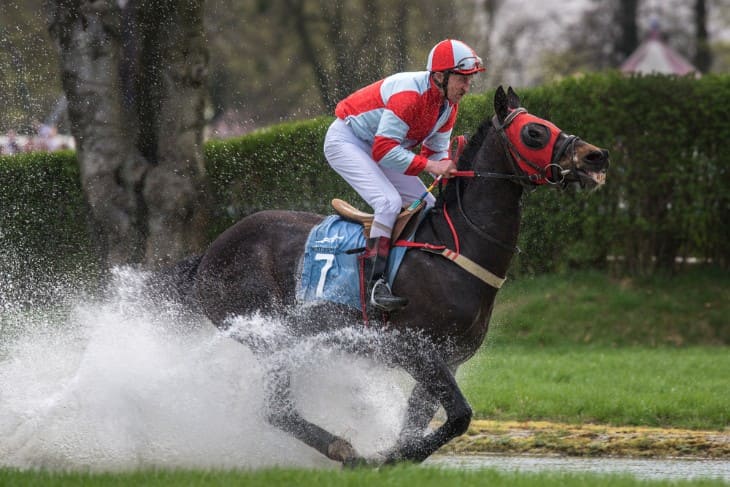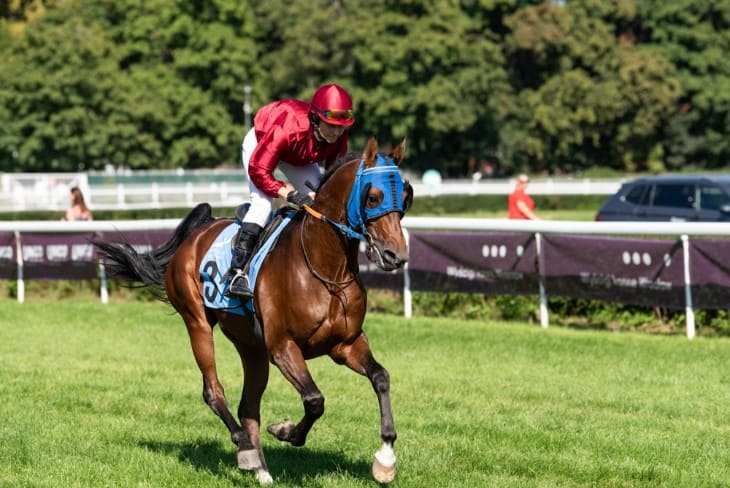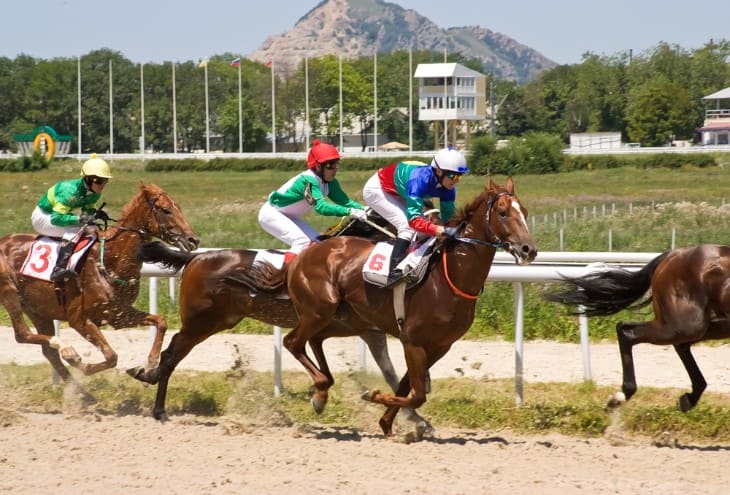- Understanding Odds in Ante-Post Betting
- Key Factors Influencing Ante-Post Markets
- Historical Analysis of Grand National Winners
- Strategies for Successful Ante-Post Betting
- Analyzing Public Opinion and Market Trends
- Risks and Rewards of Ante-Post Betting
- Comparing Ante-Post Betting with Day-of-Race Betting
- Conclusion
The term "ante-post" derives from the Latin phrase "ante" meaning "before," and "post," referring to the starting post in racing. Historically, this type of betting was popular among seasoned bettors who had in-depth knowledge of the horses, their pedigrees, and racing conditions.
In the early 20th century, ante-post betting was primarily conducted in person, with bookmakers offering odds on major races like the Grand National or the Derby. As horse racing gained popularity, ante-post betting also became more widespread, attracting a broader audience. The introduction of televised races in the mid-20th century expanded the reach of horse racing, subsequently influencing the ante-post betting market. Punters were now able to follow the progress of horses and make more informed decisions about their ante-post bets.
Understanding Odds in Ante-Post Betting
Odds in ante-post betting are dynamic and can offer significant value to the discerning punter. Unlike odds in betting closer to the race day, ante-post odds are set based on predictions and estimations of a horse's potential performance. These odds are influenced by a variety of factors including the horse's past performance, training regime, pedigree, and even rumours about its condition and potential.
In ante-post betting, odds are typically higher, reflecting the greater risk involved. This risk stems from several uncertainties such as the horse's participation in the race, changes in its condition, and other unforeseen factors that could affect its performance. For instance, if a punter places a bet on a horse at 20/1 odds months before the Grand National and the horse's form improves significantly as the race approaches, those odds can offer a substantial return. However, if the horse does not participate in the race for any reason, the bet is usually lost. This contrasts with betting closer to the race day, where odds are more stable but generally lower, reflecting the reduced risk and increased information available about the horses' conditions.
Key Factors Influencing Ante-Post Markets
Ante-Post Betting markets are shaped by a myriad of factors that bettors must consider to make informed decisions. These factors, often interrelated, play a crucial role in determining the odds and potential outcomes of horse races, especially in events like the Grand National.
- Horse's Performance History: A horse's past performances, particularly in races similar to the upcoming event, are a primary factor. Bettors examine win-loss records, race times, and performances in different conditions to gauge a horse's consistency and potential.
- Trainer and Jockey Records: The reputations and track records of trainers and jockeys contribute significantly. A well-regarded trainer or a jockey with a history of success in major races can positively influence the odds.
- Horse's Physical Condition: Information about a horse’s current physical condition, including any injuries or health concerns, is vital. This data is not always readily available to the public, making insider knowledge particularly valuable.
- External Factors: These include track conditions, weather forecasts, and even the horse's behaviour and temperament in the build-up to the race. Such externalities can dramatically affect a horse's performance.
Understanding and analysing these factors require skill and experience. Successful Ante-Post Betting often involves a blend of statistical analysis, insider knowledge, and an understanding of horse racing dynamics.
Historical Analysis of Grand National Winners
The Grand National, a hallmark event in British horse racing, provides a rich tapestry for historical analysis. Studying past winners of the Grand National can offer valuable insights for Ante-Post Betting, particularly in understanding trends and patterns that may influence future races.
One notable trend in the history of the Grand National is the type of horses that tend to win. Historically, horses aged between 8 and 11 years have shown a higher probability of winning. This trend can guide bettors in narrowing down their choices. Additionally, the weight carried by horses has also been a critical factor. Horses carrying a weight of less than 11-00 have historically performed better, a pattern that bettors often consider while placing ante-post bets.
The analysis of past winners also extends to the performance of trainers and jockeys. Certain trainers and jockeys have shown remarkable success at the Grand National, and their involvement in a race can sway the odds significantly. This historical perspective, combined with current form and conditions, forms a vital part of the strategic approach to Ante-Post Betting on the Grand National.
The roles of jockeys and trainers are pivotal in shaping the odds in horse racing, particularly in Ante-Post Betting. Their expertise, experience, and track records are closely analysed by bettors as they can significantly influence a horse's performance in a race.
Jockeys bring their unique riding styles, skills, and race strategies, which can make a substantial difference, especially in challenging races like the Grand National. A jockey's ability to navigate the course, maintain the horse's pace, and make split-second decisions under pressure can turn the odds in their favour. Bettors often favour horses ridden by jockeys who have a history of performing well under similar race conditions or in past editions of the Grand National.
Trainers, on the other hand, are responsible for preparing the horse for the race. This includes devising training regimes, ensuring optimal health and fitness, and choosing the races that best suit the horse's abilities. A trainer with a history of success in major races, or one known for bringing out the best in their horses, can positively affect the betting odds. Their decisions on when to run a horse, which jockey to pair with, and how to prepare for specific race conditions are critical components that bettors consider in Ante-Post Betting.

Strategies for Successful Ante-Post Betting
Successful Ante-Post Betting involves a combination of thorough research, strategic planning, and an understanding of the dynamics of horse racing. Bettors who excel in this form of betting often employ a range of strategies to enhance their chances of success.
- In-depth Horse Analysis: This involves studying a horse's performance history, pedigree, and potential for improvement. Bettors look at factors such as the horse's past results, particularly in races similar to the upcoming event, and any notable improvements in form.
- Monitoring Market Movements: Keeping an eye on how the odds fluctuate in the ante-post market can provide insights into public sentiment and potential value bets. Bettors watch for significant movements in odds, which can indicate insider knowledge or a shift in public opinion.
- Timing of Bets: Deciding when to place an ante-post bet is crucial. Placing a bet too early can be risky due to uncertainties, but waiting too long may result in shorter odds. Skilled bettors balance these factors to determine the optimal time to place their bets.
- Diversification of Bets: Spread betting across multiple horses or races can mitigate risk. By not putting all their stakes on a single horse, bettors can manage their risk exposure while maintaining the potential for profitable returns.
Implementing these strategies requires a combination of knowledge, patience, and experience. Bettors who master these aspects can find significant value and satisfaction in Ante-Post Betting.
Analyzing Public Opinion and Market Trends
Public opinion and market trends play a significant role in shaping the landscape of Ante-Post Betting. The collective sentiment of bettors and the general public can influence the movement of odds in the ante-post market, sometimes independent of the horses' actual prospects. Understanding these trends is crucial for bettors who seek to navigate the ante-post betting landscape effectively.
The flow of bets in the market often reflects public opinion. A horse receiving a high volume of bets can see its odds shorten, even if there's no change in its objective chances of winning. This phenomenon, known as the 'bandwagon effect', can lead to value opportunities in overlooked horses. Conversely, a horse might be undervalued due to negative public sentiment, despite having strong credentials.
Market trends can also be driven by news and media reports. For instance, reports on a horse's impressive training session or a tip from a reputed source can sway public opinion. Bettors who closely monitor these trends and understand their implications can gain an edge in Ante-Post Betting.

Risks and Rewards of Ante-Post Betting
Ante-Post Betting inherently carries a distinct set of risks and rewards that distinguish it from betting closer to the event. Understanding these can help bettors make more informed decisions and manage their betting strategies effectively.
The primary risk in ante-post betting is the 'non-runner' scenario, where a bet is lost if the horse does not start the race. This risk is higher in ante-post betting due to the extended period between placing the bet and the actual race. Changes in a horse's condition, training setbacks, or strategic decisions by the trainer can lead to a horse being withdrawn. However, some bookmakers offer 'non-runner no bet' terms on certain big races, which can mitigate this risk.
The rewards of ante-post betting can be significant, primarily due to better odds. Ante-post odds often offer higher value, as they are set before the horse's form for the specific race is fully known. This potential for higher returns attracts many bettors to Ante-Post Betting, despite the risks. Successful ante-post bettors often combine their knowledge of horse racing with strategic timing, placing bets when they believe the odds are in their favour.
Comparing Ante-Post Betting with Day-of-Race Betting
Comparing Ante-Post Betting with day-of-race betting highlights some key differences in strategy, risk, and potential returns. These differences are crucial for bettors in deciding which approach aligns best with their betting style and goals.
In ante-post betting, bets are placed well in advance, often at higher odds. This early betting requires a deeper understanding of horse racing dynamics and a willingness to accept the risk of the unknown, such as non-runners or changes in race conditions. Ante-post betting is attractive for those looking to secure high odds on a horse they believe will see its odds shorten as the race approaches.
Day-of-race betting, on the other hand, offers more stability. Odds are based on up-to-date information, including the confirmed list of runners, latest track conditions, and comprehensive form guides. This reduces some risks inherent in ante-post betting, such as non-runners, but also typically means shorter odds. Day-of-race betting is preferred by those who favour more information and less risk, even if it means accepting lower potential returns compared to Ante-Post Betting.
Conclusion
In conclusion, Ante-Post Betting in the context of the Grand National presents a complex yet potentially rewarding challenge for bettors. It requires a blend of strategic thinking, in-depth knowledge of horse racing, and an understanding of the various factors that influence the betting market. From analysing horse performance and trainer-jockey dynamics to assessing the impact of weather conditions and market trends, successful ante-post betting demands a comprehensive approach








